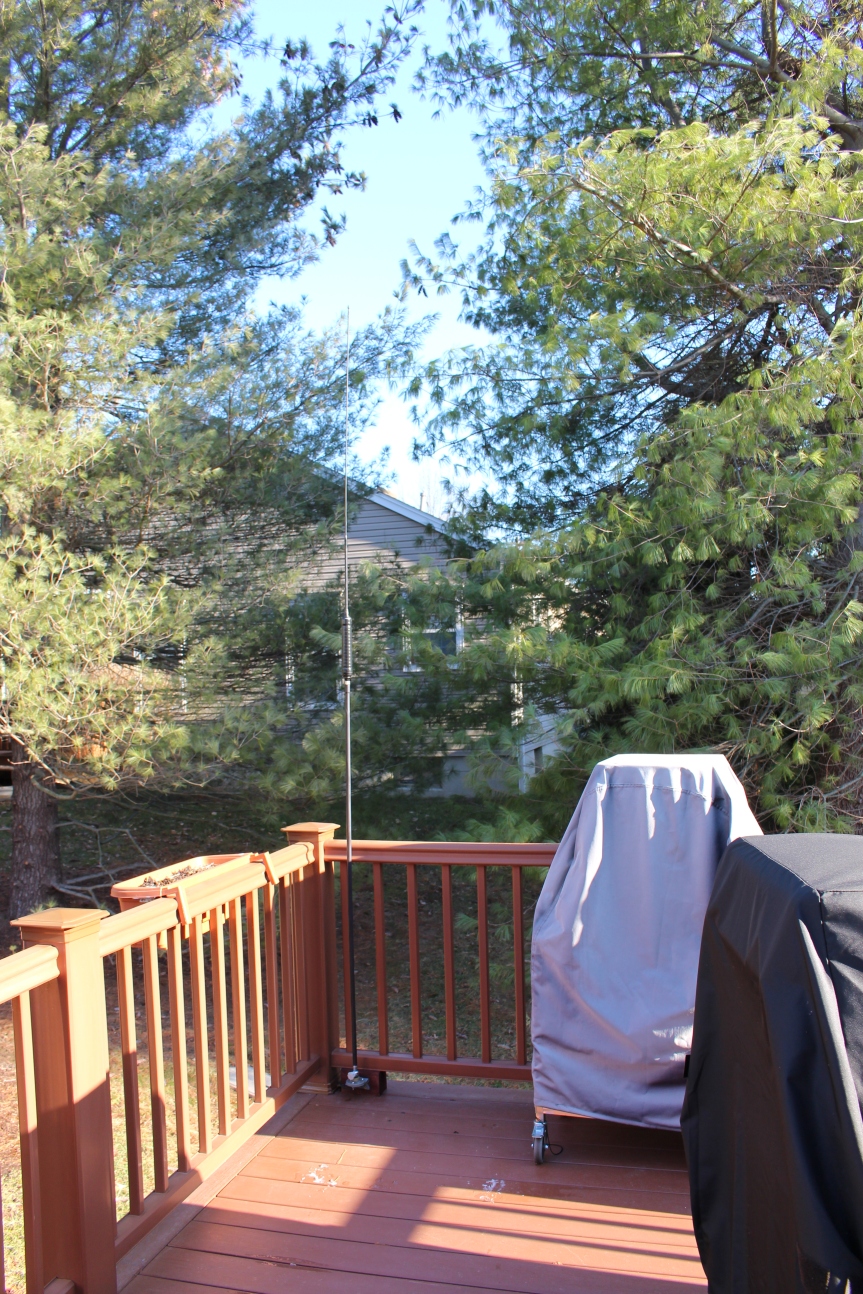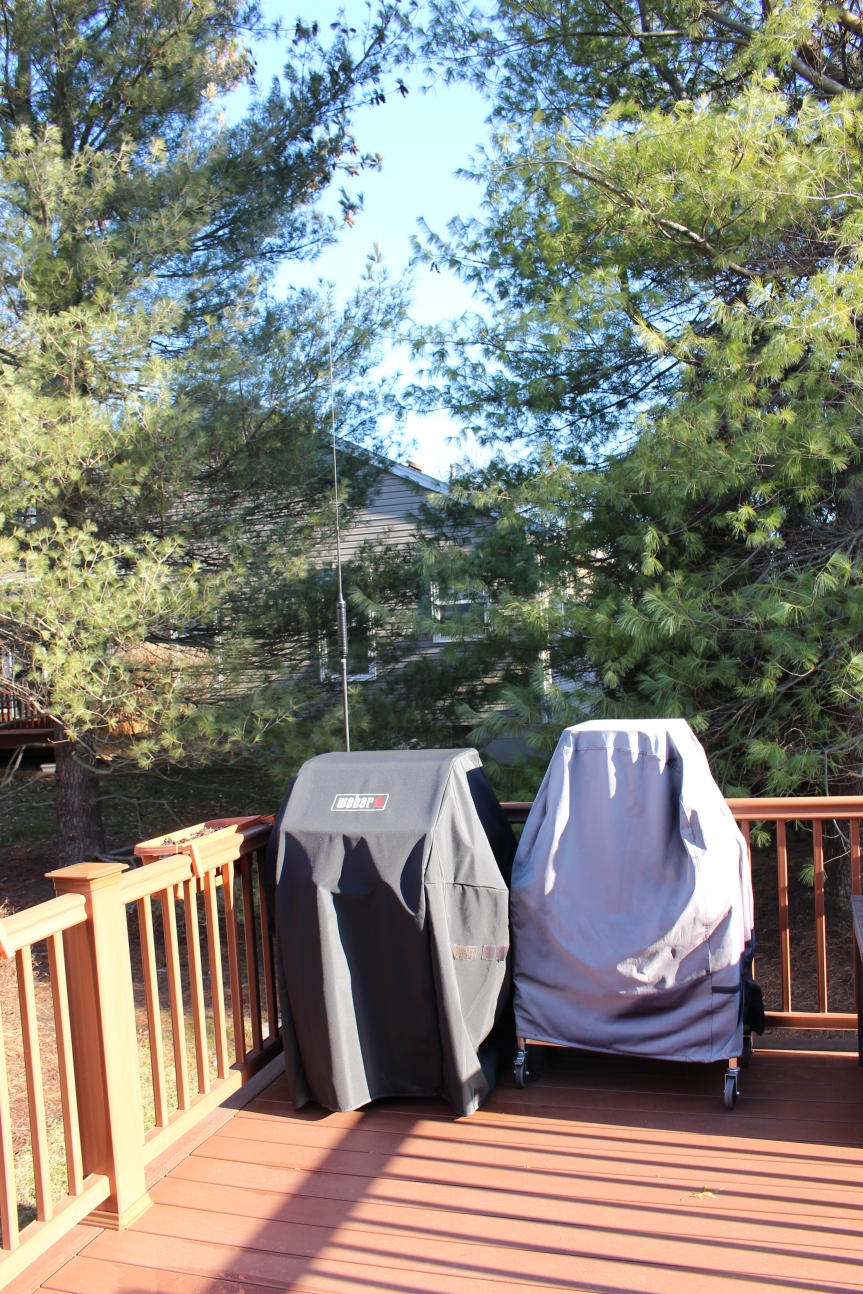Compromise HF Antennas

There have been many new Hams using the 985 repeater. It is good to see all the new interest in Amateur Radio and the activity on 985. New Hams have a lot to learn and many aspects of the hobby seem strange and mysterious. Antennas are always an area of much interest to old and new Hams alike. We are always looking for the perfect antenna but generally have little knowledge about how they work. For the new Ham it can be a mysterious and confusing subject.
How can you transmit power through and open circuit or even a short circuit? Why does an open circuit look like a 72-ohm load? These are subjects for a later time.
There are two basic types of antennas, dipole and vertical. The first law of antennas is to make them as big as you can and install them as high as you can. Most Hams do not have the physical space to install a big and high antenna. We therefore begin to make compromises.
Hams do not have an issue installing antennas for VHF and UHF operation. They are small and if mounted at a reasonable location, they will work fine for operating local repeaters. A magnet mount mobile antenna can be put on a cookie sheet, set on the kitchen table and you are on the air. HF antennas are a different story. The lower the band, the bigger and higher the antenna needs to be to get maximum performance. Many Hams do not have the space to install high performance antennas for the HF bands. More and more Hams are living in homes that do not allow outside antennas. To the new Ham it seems like VHF and UHF are the only option.
This article will discuss installing HF antennas in locations that are deed restricted.
I lived on two acres of ground with no restrictions for antennas. I had a short tower with a 5 element 10 meter beam and 3 element 20 meter beam. They were low but the performance was great with well over 250 countries confirmed. In 2006 we moved into a golf course community that does not allow outside antennas. For several years I did not have my HF station set up. Then I put a G5RV Jr. in the attic. I did not operate much for a few more years. The G5RV Jr. did not seem to perform very well. The G5RV Jr. needed an antenna tuner to operate which degraded the performance. When I began to consider retiring and spending more time on Amateur Radio, I started thinking of how to improve my HF performance.
The recent innovation of new forms of digital communications in Amateur Radio began to interest me. I began to operate PSK31 and FT8. These are software programs that take an RF analog signal made of audio tones and decode it into text. Each program operates differently. They are specifically design for low level signals. They can decode signals that are 20db below the average noise floor. Even with my G5RV Jr. I found that I could communicate with DX stations all over the world.
I decided that I wanted better performance, so I began to build and install standard dipole antennas in the attic. I built dipoles for 10, 15, and 20 meters and was able to support center of the dipole to the peak of the roof and attach the ends to the roof joist in an inverted V configuration. This drastically improved my performance. But I still wanted 40 meters. I found that if I built a standard 40 meter dipole and attached the center of the dipole to the peak of the roof at the center of the house, I could extend the ends diagonally from corner to corner of the house when I used an inverted V in a Z configuration. I was able to tune all the antennas to less than 1.5 to 1 SWR and the performance is very good. I no longer needed the antenna tuner to operate on any of the bands. I have confirmed all 50 states on 20 meters, 49 states on 40 meters, and around 25 states on each 15 and 10 meters. I have confirmed 101 countries combined on 20 and 40 meters. I confirmed 25 of 40 zones and 6 of 7 continents.
I was still unsatisfied. I also wanted to work 80 meters. I did not have the internal space for an 80 meter dipole. Back in my RVing days I had purchased a Hustler recreational vehicle mount with a Hustler 54-inch mast and a 20 meter Hustler resonator. While reorganizing the basement I found the antenna and began to think about how I could us it. I considered buying the 80 meter resonator and using the antenna on 80 meters. Then I had to find a place to mount the antenna.
The deck was the logical place but how do I get a ground plane? The antenna was designed to be put on a vehicle where the metal parts in the vehicle would provide the ground plane. A perfect 80 meter ground plane requires at least 32 radials spread 360° each being roughly 66 feet long. I needed another solution.
The ARRL Antenna Handbook is a great resource for new and old Hams alike. I studied the articles in the handbook and finally decided that I would make a ground plane using a 3-foot by 25-foot piece of 1-inch by 1-inch steel fencing as a counterpoise. My deck was very close to the ground, so I decided to roll it out on the ground. I only had 20 feet to roll out the fencing, so I rolled it to the back of the deck and left the remainder in the roll. I then covered the fence with some additional stones, so it cannot be seen by anyone walking past. For decks that are mounted high off the ground the fencing could be tacked to the underside of the deck. I mounted the RV mount on a 4 by 4 and placed it at the corner of the deck furthest away from the house. I connected the fence to the mount with a covered 14-gauge copper wire.
I placed the 54-inch mast and 80 meter resonator on the mount and tuned the antenna to the 80 meter FT8 frequency. I was able to get a 1 to 1 SWR. I immediately began to work Ham stations all over the United States. I still was not happy because the mast was white, and the resonator was white with a stainless-steel whip. It was more visible than I liked. I only work 80 meters at night so I could remove the antenna during the day, but it was still easily seen at night. I therefore purchased black heat shrink tubing and put it on the mast and whip. The resonator was too large for heat shrink, so I wrapped it with black electrical tape. (See the attached pictures.) It now became very difficult to see at night.

The experienced Hams out there are going to point out that covered radiators have a different impedance than bare radiators. This is true and I had to retune the antenna. Covered radiators are shorter than uncovered. When using mobile antennas, the effects are even more dramatic. They will also point out that radials or counterpoise will change impedance depending on the installation. As with radiators, radials and counterpoise will also change impedance when covered. The impedance is also different when they are installed above ground, on the ground or underground.
The impedance changes due to installation need to be taken into consideration when building the antenna. Not everyone will have enough space under the deck to install a ground plane that will allow a match. In this case install a ground plane as large as the space will allow and put a tuner between the base of the antenna and the ground plane.
Here are a few notes to consider when building a ground plane. The fencing works well on lower bands since the counterpoise needs to be large. When trying to use it on the higher bands the fence counterpoise becomes too large and it is difficult if not impossible to tune. The solution is to add a tuned radial or radials to the base of the mobile antenna for the higher frequency bands. I can now use a 30 meter and 17 meter resonators with the system. These radials may be attached to the underside of the deck. If the deck is accessible from the underside install the radials or fencing so they cannot be contacted by someone walking under the deck. The additional radials will not affect the tuning of the counterpoise on the lower bands.
The performance with the 80 meter Hustler antenna has been very good. In three months, I confirmed all 50 states and 13 countries.
My results using compromised antennas with the original form of digital communication – CW, has been good. When the bands open, I believe I will also have success on 10 and 15 meter phone.
To the new Hams, build your antennas as large as you can and install them as high as you can.
However, do not leave the lack of space or deed restrictions keep you from getting on the air.
There are always alternatives available. Remember you cannot work anyone until you put RF in the ether. Then anything can happen.
Last of all, if you have questions or need assistance, get on the 985 repeater and call for help.
One of the many “senior” OPs will have the answer.
73 GL es GUD DX
WA3BMX

Great article Harry. I am sure many will benefit from reading it, especially those that have H.O.A. restrictions. Thanks for taking the time to author it.
LikeLiked by 1 person
Wow. Awesome article! Major thanks to you, Harry, for making such an effort to write and share all of that information. Your piece is quite valuable in that it dealt with actual “real world” fabrication. “Theory” is certainly interesting and important, but in the end, an operator has to “just do it” by making something, installing it, and getting on the air. You shared examples of how it can be done, which serves as an example to all amateur radio operators, no matter what their physical restrictions might be. Your ultimate message is “it CAN be done with a bit of work and ingenuity!” Bravo, and thank you! 73 de KB3ZIM
LikeLiked by 1 person